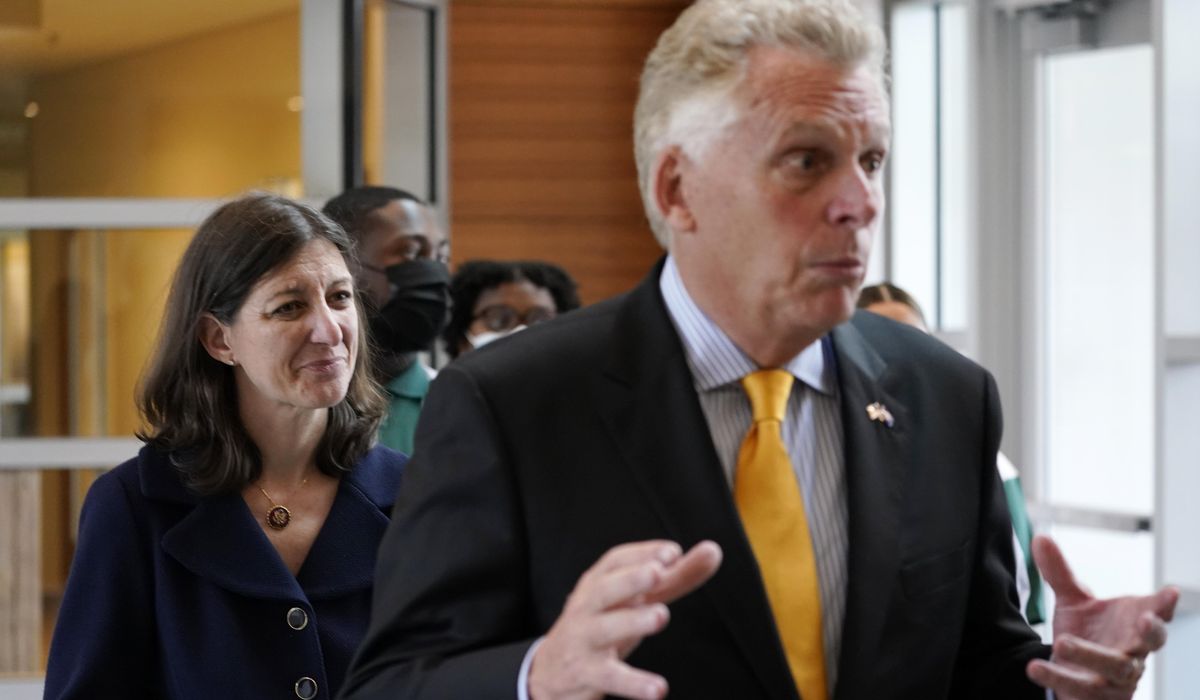
Virginia Democratic gubernatorial nominee Terry McAuliffe boasts that he presided over booming economic growth in the commonwealth during his time as governor, but the numbers show a different story.
Mr. McAuliffe, running for a second, nonconsecutive four-year term against Republican businessman Glenn Youngkin, describes himself on the campaign trail as a governor who “created 200,000, new high-paying jobs.”
Since 2009, when Mr. McAuliffe first ran for governor, he promised to “create more jobs than all the other 49 governors.” He made the same promise at a 2013 debate during his second run for governor. He followed up with the pledge each year after that until 2017, during his term as governor.
“I did it before, and they all know with a Democratic legislature, boy, I feel bad for those other 49 states ’cause, I’m telling you, Virginia is going to lead the country,” he told CNN in March.
Still, data from the Bureau of Labor Statistics from December 2013, immediately before Mr. McAuliffe took office, shows employment in Virginia at 4,021,840. In January 2018, by the end of McAuliffe‘s term, employment was at 4,204,892. That was an increase of 183,052 jobs, or 4.6%.
Other states, including neighboring Maryland at 12.8%, increased jobs by higher rates: Florida, 10.2%; Georgia, 11.9%; North Carolina, 8.5%; South Carolina, 7.5%; Tennessee, 9.5%; and Texas, 8.1%.
Had Virginia employment grown at the competitor state average of 9.8%, Virginia would have added 394,140 jobs during Mr. McAuliffe‘s tenure as governor.
Mr. McAuliffe‘s jobs number compared with those of his immediate predecessors is relatively average. Gov. George Allen, a Republican, left office with 313,300 net new jobs, and Gov. James S. Gillmore III, a Republican, finished his term with 221,000 additional jobs. Gov. Mark R. Warner, a Democrat, netted 207,300 new jobs.
The candidate also says personal income in Virginia rose 14% while he was in office.
The state’s personal income did grow 14.6% during Mr. McAuliffe‘s time as governor, but the average growth in neighboring states was 2.5 percentage points higher.
According to statistics from the Bureau of Economic Analysis, Florida’s personal income grew 19.7%, Georgia’s rose 19.0% and Maryland shot to 15.1%. Rates went to 15.8% in North Carolina, 17.7% in South Carolina and 15.5% in Tennessee.
Although McAuliffe left office with a 3.7% unemployment rate, Old Dominion University’s 2017 State of the Commonwealth Report noted that Virginia’s growth lagged the rest of the country during the previous six years and the state’s economy hardly grew.
“Virginia’s economy expanded during McAuliffe‘s tenure, but that’s hardly surprising given that the national economy grew during that period. To assess whether McAuliffe made a difference, you want to compare Virginia to other states,” Dan Mitchell, chairman of the Center for Freedom and Prosperity, told The Washington Times. “On that basis, he doesn’t look good. It’s not just that job growth and income growth lagged compared to zero-income tax states such as Florida and Texas. Virginia even lagged behind high-tax Maryland when comparing jobs and income.”
The Washington Times reached out to a McAuliffe campaign spokesman for a response and did not hear back. The Virginia governor’s election is scheduled for Nov. 2.
